Heparin Dose Adjustment Calculator
Enter your lab values to get dose adjustment recommendations.
Did you know that up to 30% of people with chronic liver disease face serious bleeding problems when they’re on blood thinners? If you or a lovedone are dealing with both Heparin Sodium is a fast‑acting anticoagulant that prevents clots by enhancing the activity of antithrombin III, a natural protein that stops blood from thickening too much. At the same time, Liver Disease includes conditions like cirrhosis, hepatitis and fatty liver that impair the organ’s ability to produce clotting factors, regulate blood flow, and clear drugs from the bloodstream. When these two worlds collide, the balance between preventing dangerous clots and avoiding life‑threatening bleeds becomes especially delicate.
Why Heparin Needs Special Care in Liver Disease
Heparin works by binding to antithrombin III, which then inactivates clotting proteins such as thrombin and factor Xa. In a healthy liver, the production of antithrombin III and many clotting factors is steady, so dosage can be fairly predictable. In liver disease, however, the liver’s synthetic function drops, leading to lower levels of both clotting factors and antithrombin III. This means the same dose of heparin sodium can have a much stronger effect, pushing patients into a bleeding‑prone state.
Key Lab Tests to Monitor
- Activated Partial Thromboplastin Time (aPTT) - the primary test to gauge heparin’s effect.
- Platelet Count - low platelets (thrombocytopenia) are common in liver disease and increase bleed risk.
- ALT (Alanine Aminotransferase) and AST (Aspartate Aminotransferase) - track liver inflammation and damage.
- Child‑Pugh Score - a composite score (bilirubin, albumin, INR, ascites, encephalopathy) that predicts how well the liver can handle medications.
Each of these numbers tells a story. For example, a sudden rise in aPTT beyond the target range (usually 1.5‑2.5× control) signals that the heparin dose is too high, especially when the Child‑Pugh score is ≥7 (moderate to severe disease).
Adjusting the Dose: A Step‑by‑Step Checklist
- Start low. Begin with a conservative bolus (e.g., 5-10U/kg) instead of the standard 80U/kg.
- Check aPTT 4-6hours after the first dose and again after any change.
- If aPTT is above the therapeutic window, reduce the infusion rate by 10‑20%.
- Re‑measure aPTT after each adjustment until it stabilizes.
- Tip: In patients with a Child‑Pugh score≥9, aim for the lower end of the therapeutic range.
- Monitor platelet count at least twice weekly; stop heparin if platelets drop below 50×10⁹/L.
- Re‑assess liver enzymes (ALT, AST) monthly; rising values may signal worsening liver function and necessitate dose reevaluation.
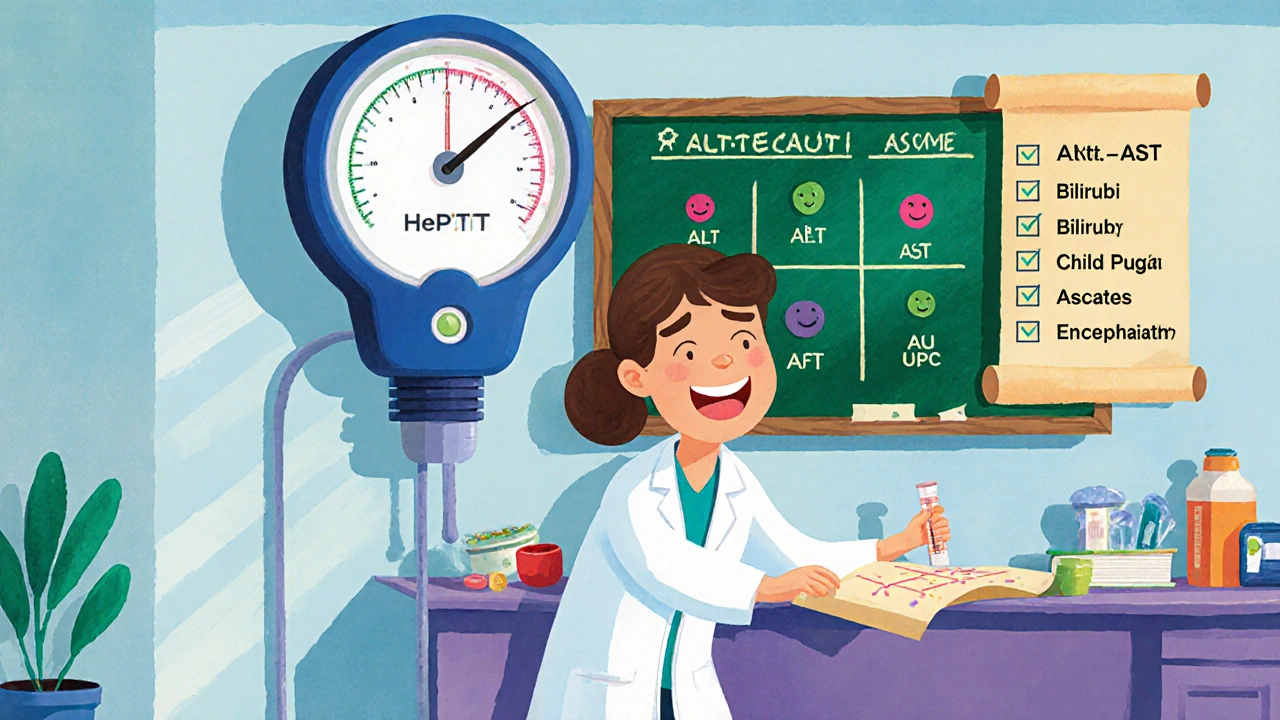
Signs of Trouble: When to Call Your Doctor
Even with careful monitoring, bleeding can sneak in. Look out for:
- Unexplained bruises or petechiae (tiny red spots) on skin.
- Blood in urine, stool, or vomit.
- Severe headache or visual changes - possible intracranial bleed.
- Swelling or pain in joints - internal bleeding could be accumulating.
If any of these appear, stop the infusion and seek medical attention immediately. Most hospitals have a reversal agent (protamine sulfate) that can neutralize heparin within minutes.
Drug Interactions You Shouldn't Ignore
Heparin doesn’t work in isolation. Several medications commonly prescribed to liver patients can magnify its effect:
| Medication | Interaction | Management Tip |
|---|---|---|
| Warfarin | Both anticoagulants increase bleed risk. | Avoid concurrent use unless bridging is medically required. |
| Vitamin K (high dose) | May counteract heparin’s effect, leading to sub‑therapeutic anticoagulation. | Limit to prescribed dose; monitor INR if used together. |
| Non‑steroidal anti‑inflammatory drugs (NSAIDs) | Impair platelet function, compounding bleed risk. | Prefer acetaminophen for pain; if NSAIDs needed, increase monitoring. |
| Direct‑acting antivirals for hepatitis C | Some agents affect liver enzymes, altering heparin clearance. | Check liver panel after starting antiviral therapy. |
Always list every medication, supplement, and even herbal product with your healthcare team. Even something as seemingly harmless as garlic pills can thin the blood.
Living with Heparin: Practical Lifestyle Tips
Managing a blood thinner while dealing with liver disease isn’t just about labs; daily habits matter too.
- Stay hydrated. Dehydration can concentrate the blood and make clotting tests harder to interpret.
- Maintain a balanced diet. Protein‑rich foods support clotting factor production, but avoid excess vitamin K‑rich vegetables (like kale) if you’re also on warfarin.
- Limit alcohol. Alcohol further injures liver cells and can swing clotting numbers wildly.
- Exercise gently. Light walking improves circulation without raising injury risk.
- Carry a medical alert card. Include “On Heparin Sodium - Liver Disease” so emergency staff act quickly.
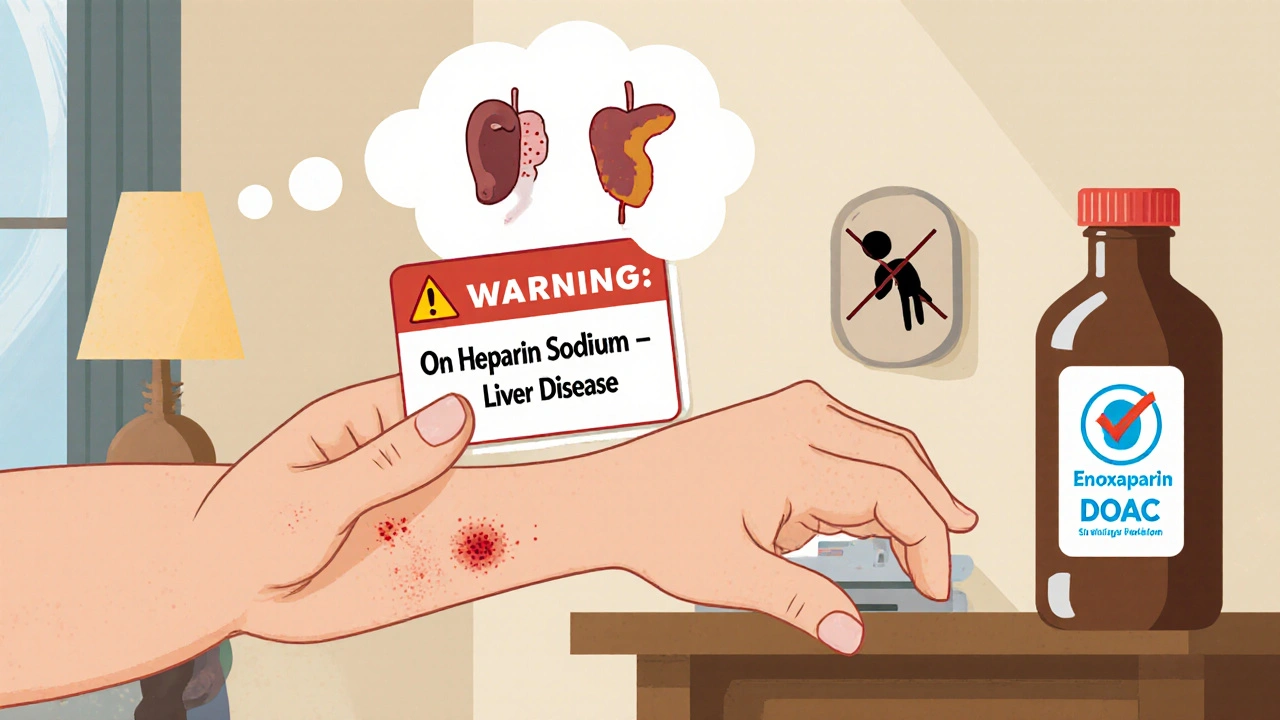
When Heparin Isn’t the Right Choice
Sometimes the safest route is to avoid heparin altogether. Consider alternative anticoagulants if:
- Platelet count stays below 50×10⁹/L despite adjustments.
- Child‑Pugh score reaches 11-15 (very severe disease) and bleeding episodes have occurred.
- Patient has a history of heparin‑induced thrombocytopenia (HIT).
Low‑molecular‑weight heparins (LMWH) like enoxaparin have a more predictable dose‑response but still require caution. Direct oral anticoagulants (DOACs) are generally not recommended in advanced liver disease because they rely heavily on hepatic metabolism.
Quick Reference Cheat Sheet
- Target aPTT: 1.5‑2.5× control.
- Platelet trigger: Stop if <50×10⁹/L.
- Child‑Pugh >9: Use lower end of therapeutic range.
- Reversal: Protamine sulfate 1mg per 100U heparin.
- Red‑flag symptoms: New bruising, blood in stool/urine, severe headache.
Frequently Asked Questions
Can I take aspirin while on heparin sodium?
Aspirin adds extra platelet inhibition, which can push the bleeding risk higher. If you need pain relief, talk to your doctor about safer alternatives like acetaminophen.
How often should my aPTT be checked?
During the first 24‑48hours, test every 4‑6hours after any dose change. Once stable, weekly checks are usually enough unless liver function worsens.
Is subcutaneous heparin safer than an IV drip?
Subcutaneous dosing provides a slower, more predictable rise in anticoagulation, which can be gentler for fragile livers. However, IV infusion allows tighter control when rapid anticoagulation is needed.
What should I do if I miss a heparin dose?
Contact your clinic right away. They’ll likely draw a fresh aPTT and decide whether to give a smaller bolus or simply adjust the infusion rate.
Can dietary vitamin K affect heparin therapy?
Vitamin K mainly interferes with warfarin. It has little direct impact on heparin, but extreme changes in diet can alter overall liver function, which indirectly influences heparin’s effect.
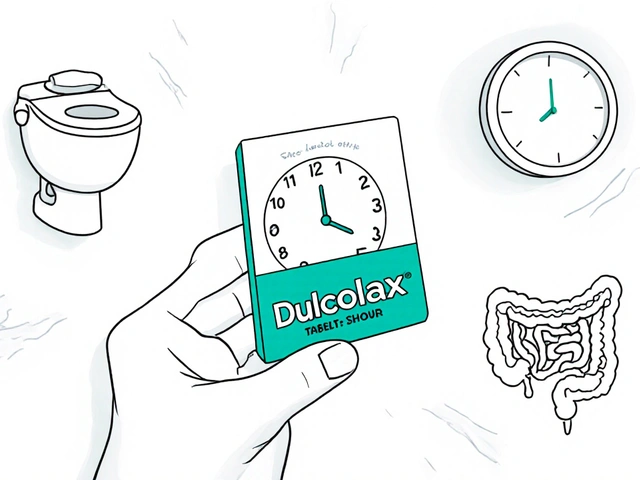


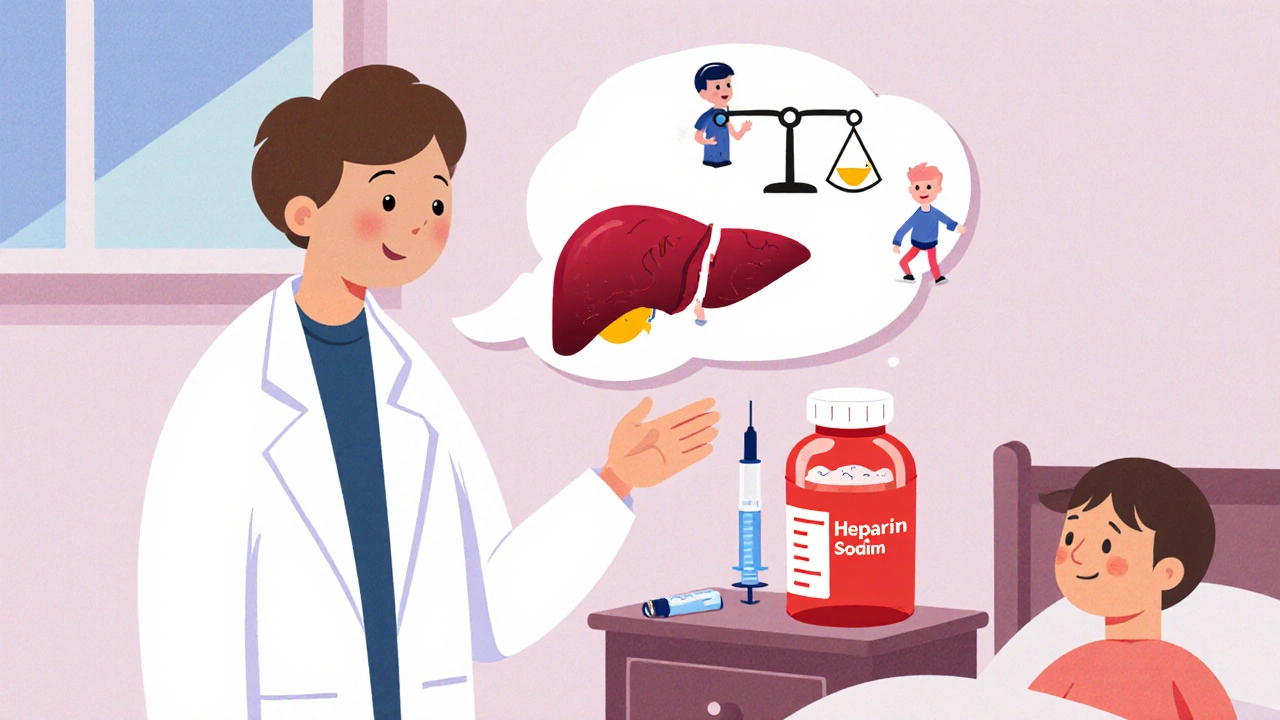
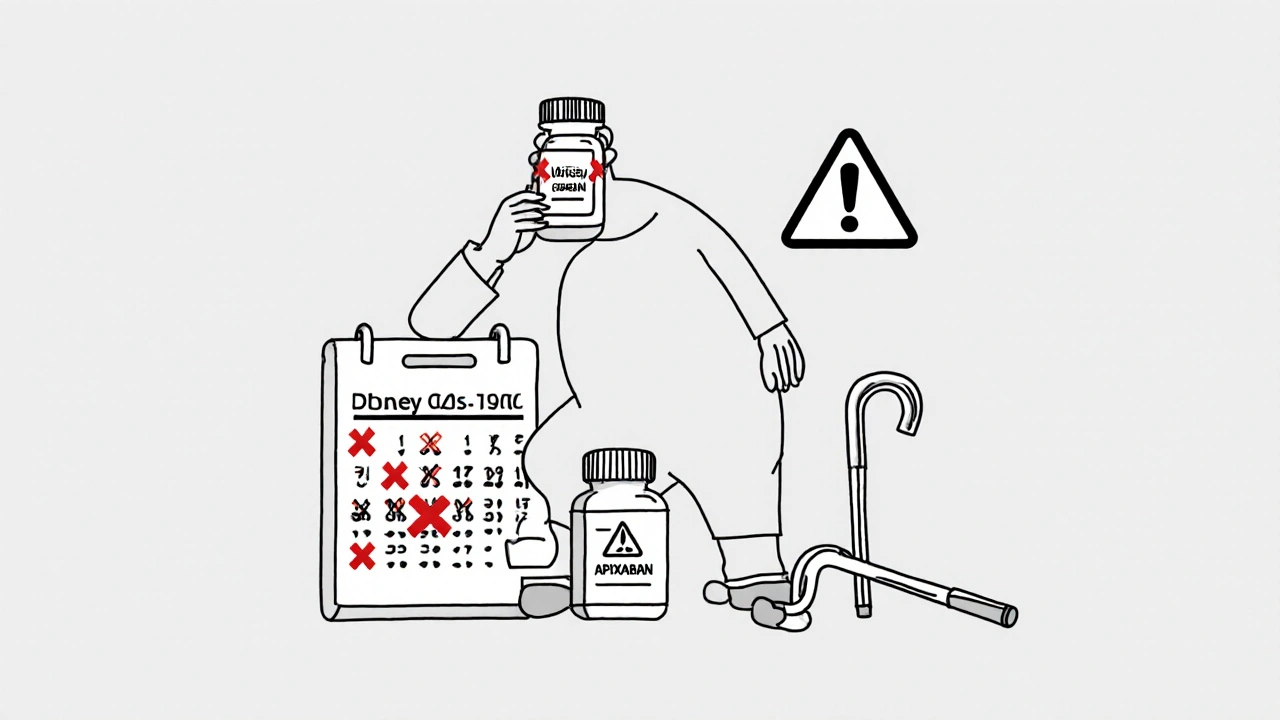
Comments
18 Comments
Kevin Huckaby
💥 Listen up, folks! If you're on heparin and wrestling with liver disease, you gotta start low and watch those labs like a hawk – American precision matters! 🚀
Brandon McInnis
Great rundown! I especially love the step‑by‑step checklist – it feels like having a friendly nurse right beside you, guiding every adjustment.
Chris Smith
Honestly, most of this is common sense – low dose, check aPTT, watch platelets. People could learn this in a minute.
Camille Ramsey
Okay, let’s get grammar right: "Heparin" not "heparin" when starting a sentence. Also, don’t forget that the liver’s ability to clear drugs is not just "drops", it "declines progressively".
Scott Swanson
True, Camille. And for those new to this, think of the liver as a gatekeeper – if it’s compromised, every dose feels like a roulette wheel. Stay vigilant!
Zachary Endres
What a lifesaver this guide is! I’ve seen patients panic over a tiny bruise, but with the clear red‑flags listed, they can act fast and calm down.
Ashley Stauber
Honestly, I think everyone over‑reacts to every small bleed. As long as the aPTT stays in range, a few spots aren’t a catastrophe.
Amy Elder
Staying hydrated is key – water helps keep the blood less viscous, which makes lab readings more reliable.
Erin Devlin
Clarity is power; concise monitoring beats frantic guessing.
Will Esguerra
Indeed, Erin. When you think about the interplay of antithrombin levels and hepatic synthesis, you see a delicate balance. A modest misstep can cascade into a bleeding emergency. Therefore, the recommendation to start at 5‑10 U/kg is not merely conservative; it respects the altered pharmacodynamics in cirrhosis. Moreover, the timing of aPTT checks – 4 to 6 hours post‑dose – aligns with the drug’s half‑life and allows for timely adjustments. Remember that platelet counts below 50×10⁹/L demand immediate cessation, because thrombocytopenia compounds the anticoagulant effect. Lastly, keep a close eye on ALT and AST trends; rising enzymes may herald worsening hepatic clearance, prompting re‑evaluation of the heparin regimen.
Allison Marruffo
Excellent points, Will. I’d add that carrying a medical alert card can truly be a game‑changer in emergencies.
Ian Frith
Thanks, Allison. To expand, let’s consider the pharmacokinetics in depth. First, heparin’s binding to antithrombin III is saturable; when antithrombin levels dip, the same dose yields a disproportionately higher anticoagulant effect. Second, liver disease often coexists with hypoalbuminemia, which can alter the distribution volume of heparin. Third, renal function frequently declines alongside hepatic impairment, affecting clearance of low‑molecular‑weight heparins more than unfractionated heparin. Fourth, concomitant medications – especially NSAIDs or high‑dose vitamin K – further tilt the hemostatic balance. Fifth, the Child‑Pugh score not only predicts metabolism but also reflects portal hypertension, which can increase bleeding risk independently. Sixth, frequent monitoring of aPTT coupled with dose titration every 4‑6 hours during the initiation phase prevents overshoot. Seventh, platelet surveillance is crucial; heparin‑induced thrombocytopenia, though rare, must be ruled out promptly. Eighth, patient education on signs of bleeding cannot be overstated – early detection saves lives. Ninth, the reversal agent protamine sulfate should be readily available in the infusion unit. Tenth, documentation of any dose adjustments, lab values, and clinical observations ensures continuity of care. Eleventh, for patients with Child‑Pugh ≥ 9, consider alternative agents or lower therapeutic targets. Twelfth, always reassess liver function tests monthly – trends matter more than isolated values. Thirteenth, encourage patients to avoid herbal supplements such as garlic or ginkgo, which may potentiate bleeding. Fourteenth, ensure vaccination status for hepatitis B, as superinfection can further compromise liver health. Fifteenth, maintain a multidisciplinary approach involving hepatology, hematology, and pharmacy to optimize outcomes.
Beauty & Nail Care dublin2
Wow, Ian! That was a marathon of info – feels like a university lecture in a single post 😊.
Raghav Narayan
Thank you, Beauty. I’d like to add a few observations that may help clinicians when dealing with complex cases of heparin therapy in patients with advanced liver disease. First, always verify the baseline antithrombin III level if available, because a severe deficiency can render standard heparin dosing ineffective and may necessitate supplementation. Second, consider using point‑of‑care testing for aPTT when rapid decision‑making is required, as it reduces turnaround time compared to central laboratory analysis. Third, when initiating therapy, remember that the half‑life of unfractionated heparin is approximately 60‑90 minutes in healthy individuals, but this can be significantly prolonged in hepatic impairment, sometimes exceeding two hours. Fourth, evaluate the presence of ascites, as large fluid collections can affect drug distribution and lead to under‑dosing if not accounted for. Fifth, the interaction with direct‑acting antivirals for hepatitis C is bidirectional; some antivirals can increase heparin’s effect, while heparin may influence the metabolism of the antiviral agents, so close monitoring is essential. Sixth, in patients with a history of gastrointestinal varices, endoscopic surveillance should be performed before escalating anticoagulation intensity. Seventh, avoid co‑administration of high‑dose aspirin unless it is absolutely necessary, because the combined effect on platelet inhibition can precipitate catastrophic bleeding. Eighth, when switching from intravenous to subcutaneous heparin, adjust the total daily dose by approximately 25‑30% to maintain therapeutic anticoagulation, given the difference in bioavailability. Ninth, educate patients to report any new bruising, even minor, as this may be an early indicator of over‑anticoagulation. Tenth, maintain a low threshold for ordering a CT scan of the head if the patient reports severe headache or neurological changes, given the increased risk of intracranial hemorrhage. Eleventh, be vigilant for signs of heparin‑induced thrombocytopenia; a drop in platelet count of more than 50% from baseline within 5‑10 days should prompt immediate cessation and alternative anticoagulation. Twelfth, ensure that the dosing algorithm is documented in the patient’s chart, including target aPTT range, adjustment steps, and monitoring schedule, to facilitate handoffs between care teams. Thirteenth, consider involving a clinical pharmacist early in the management plan, as they can provide valuable insight into drug‑drug interactions and dosing nuances. Fourteenth, for patients with borderline liver function (Child‑Pugh B), a more conservative target aPTT (lower end of the therapeutic window) may reduce bleeding risk without compromising efficacy. Fifteenth, finally, always have protamine sulfate on standby and verify the correct dosing based on the total heparin administered to date. These comprehensive measures, when applied consistently, can significantly improve safety and outcomes for patients navigating the challenging intersection of heparin therapy and liver disease.
Tara Phillips
Excellent, Dr. Narayan – thorough and professional.
Derrick Blount
Indeed, Tara! Let me just point out-accuracy in dosing, especially with the units per kilogram, cannot be overstated; a clerical error of even 2 U/kg could double the anticoagulant effect in a compromised liver! Also, remember that the aPTT target is not a static number; it must be interpreted in the context of the patient’s baseline coagulation profile, which is often abnormal in chronic liver disease.
Jarrod Benson
Great points, Derrick. Keeping an eye on those details really does make the difference between safe therapy and a bleeding crisis.
Liz .
True we all need to be mindful and keep the patients safe.
Write a comment